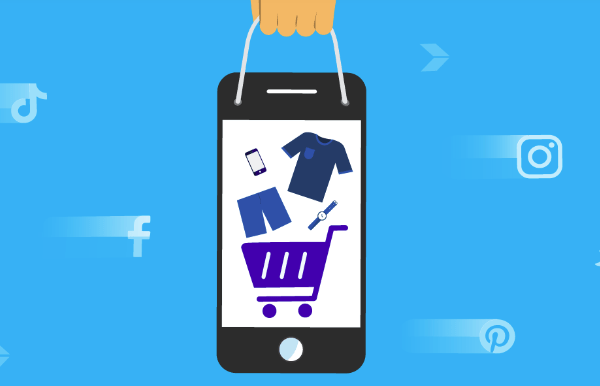China is the next frontier for internet retailers that are already looking to expand from U.S. business. Even if you’re already doing international business, Asia is not easy to penetrate as a market, China being the hardest of the Asian markets, but by far the largest.
The e-commerce market in China is not only the largest but continues to grow. The leading marketplace in China is the Alibaba group which has its flagship store, TMall, the equivalent to Amazon in the U.S.
Research firm eMarketer estimates that all Alibaba marketplaces plus JD.com and Pinduoduo took a hefty 83.6 percent of the retail ecommerce market in 2020. Statista reports that China has the largest online ecommerce population, with 710 million people shopping digitally.
The number of online shoppers in China has been increasing exponentially from below 34 million in 2006 to over 466 million users a decade later, enabling this enormous spurt of China’s e-commerce sector. By 2021, digital buyer penetration rate in China has edged close to 57 percent.
Today, we’re talking with Jonathan Cox. Jonathan is the owner of Stratforms.com a company that strategizes, launches, manages and distributes brands into China, primarily through social media activation and e-commerce. They create and navigate the pathways for companies to sell in the largest, most dynamic and challenging market in the world!
Q: Jonathan, thank you so much for your time today. Let’s get right to it. As American companies, or a company anywhere for that matter looks at entering the Chinese e-commerce market, what’s the first piece of advice you would give them?
A: I would share what one of my mentors once told me, that “China is often overestimated in terms of market size for your product, and underestimated in terms of barriers to entry.â€. The challenges are great, but the prize is great and exciting, but the challenges are equally as big! The same rules apply as far as customer acquisition costs, sales/marketing/promotional investment etc… just on a very big scale!
Q: What is the biggest challenge for companies entering the Chinese e-commerce market?
A: I think the opaqueness of the market is most challenging. There are not only the huge language, culture and political barrier, but you are also diving into the world’s only “exclusive†digital environment. EVERYTHING is different, instead of .com, Amazon, Twitter, Insta, Facebook they have Tmall.com, JD, WeChat, Weibo, Little Red Book. It all has to be understood from scratch, and each of these channels is its own “beastâ€. That said, while the names and language is different, the principles of social media, direct investment and e-com from a financial and KPI perspective are surprisingly similar. Just as you would need to invest heavily, in the USA, same goes for China.
Q: Is there any expectations you would set for retailers looking at entering the chinese market? For example, what would you say is a fair budget to have in mind to start marketing a brand / product in the Chinese market?
A: Some principles of engagement would be:
- Don’t rush, take your time with China: It is easy to rush into China to take advantage of the extensive growth opportunities. But careful and realistic consideration is important.
- Find the right partner – do your research and choose carefully: whether it be a traditional distributor partner or a service provider.
- Don’t be allured by promises of big order numbers without considering if you have the right partner to develop your brand in the long term. First order is easy, the brand building and sell through is the hard part!
- On the budget question, assuming that your brand is brand new in China, you have to realize that you are going to have to “pay to play†either by giving up margin to the point where it really hurts, or with direct cash investment.
- I would say that the very basic entry level for going into China is $USD150,000 to $USD200,000 investment year one. Spent on a mixture of digital activation and direct in market sales promotional activity. You have to invest this, or your distributor has to invest this. But this all depends on how big you want to go and how fast!
Q: You hear a lot about cross-border e-commerce in China. Can you explain to us in lamens terms what that means?
A: There are three key ways for an FMGC brand to enter the China market starting with the fastest and most cost effective to the “long play†method.
- China Cross Border E-Commerce (CBEC): Entails selling goods from one country (or in China via Free Trade Zones or Bonded Warehouses) directly to consumers in another country (China) via e-commerce. All of the major e-com platforms in China have a CBEC division. Tmall, JD, Koala, VIP, Little Red Book, Pinduoduo, Douyin (TIKTOC) etc… It is restricted by the China government to non-wholesale, individually purchased packages of goods directly to a specific individual consumer. It is relatively cost effective to set up and customs registration for most everyday categories (nutrionals, cosmetics, skincare, food etc….) only takes a few weeks. If you are “locked and loaded†you can go live online in China in as little as 60-90 days, with your own BRANDNAMEHERE.Tmall.hk flagship store.
- General Trade Import: Refers to the wholesale import of goods into China by a local (China) entity into China with import-export rights. … The legal entity clears customs and pays duties and taxes on the CIF (cost, insurance, freight) price before the product is sold into the China market. Products can then be sold into brick-and-mortar shops or on e-commerce platforms, sometimes referred to as “classic e-commerce†The customs registration process here is much more difficult. For skincare/personal care it takes 6 months to 1 year, nutritionals much longer. Food products only take 2-3 months.
- Establish a Local Company: Set up your own company in China and possibly even manufacture your products in market. The is a long term play and takes huge investment.
Q: How complex is the shipping of goods into China for a retailer that hasn’t done that yet?
A: This depends on your category and which channels you want to go into. As I mentioned above.
Q: When entering the Chinese market, generally companies go between soft TP’s and hard TP’s, which is something I learned quite about from working with you, and maybe the key piece to doing business in China. Can you explain what a TP is and the difference between the two?
A: TP, an acronym commonly used in China means Third Party or Trading Partner in China and it is loosely used for all things having to do with your partner(s) in China.
- Soft TP = Service provider only.
- Hard TP = Stocking distributor
And there are hybrid models of the two.
Q: What would you advice a brand going into China tackle first as a marketing strategy? KOL and KOC seems to be the key to marketing there. Can you explain what that is and the difference between the two?
A: For a new brand in market establishing your digital footprint essential course. This comes from a combination of official social media accounts, ecommerce presence (number of online points of sales) and also, very importantly KOL & KOC activity (number of posts, engagement with those posts etc…):
KOC: is Key Opinion Customer, who may be willing to do a post on your product just by receiving your product and maybe for a small fee. Consider them a micro blogger.
KOL: is a Key Opinion Leader, who usually has between 50k and 300k active followers. They will endorse, promote, post about your brand/product for a few.
CELEBRITY ENDORSER: Is the next level, and this is where we get into the bigger bucks. We are talking about a starting point of $USD10k per engagement/post.
And all of the above can sometimes be live streamers, connecting their customer/follower base directly to your e-com point of sale via a live sales stream.
Q: Is there any piece of advise you would give that we haven’t covered in this short interview? How can people reach you for consultations on entering the Chinese market?
A: With China you need to have a long term play and vision and realistic expectations on what it will cost and how long it will take. I love to share my passion for the China market and what I have learned in the past 20. Please contact me by phone/WhatsApp: +61408937502, or email: [email protected] or better yet WeChat!: joncox


